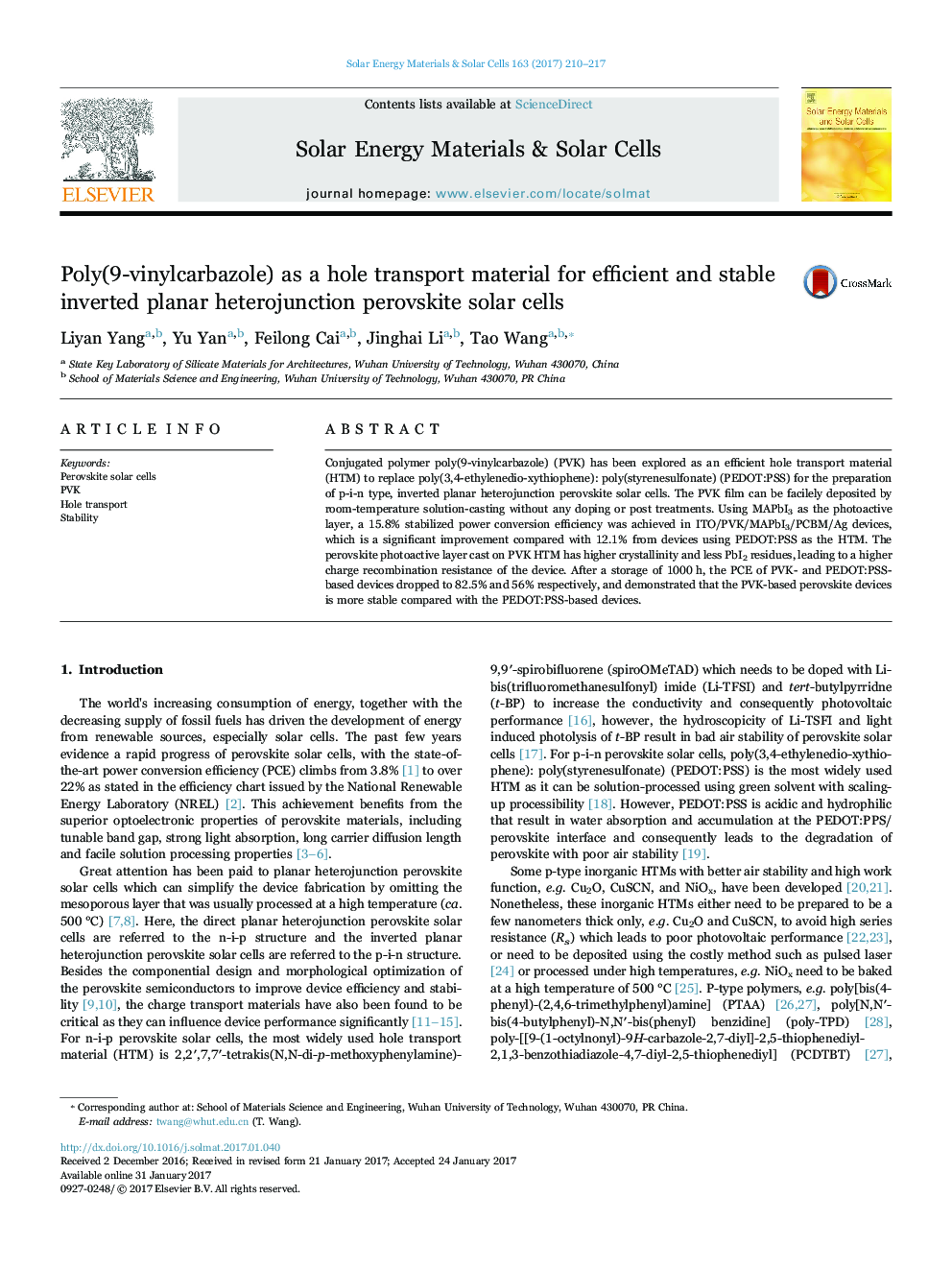| Article ID | Journal | Published Year | Pages | File Type |
|---|---|---|---|---|
| 6457221 | Solar Energy Materials and Solar Cells | 2017 | 8 Pages |
â¢PVK is an efficient hole transport material to replace PEDOT:PSS;â¢PVK film can be cast at room-temperature without any doping or post treatments;â¢PCE of 15.8% was achieved in ITO/PVK/MAPbI3/PCBM/Ag devices;â¢Perovskite cast on PVK has higher crystallinity and less PbI2 residues;â¢PVK-based perovskite device demonstrated better storage and morphological stability.
Conjugated polymer poly(9-vinylcarbazole) (PVK) has been explored as an efficient hole transport material (HTM) to replace poly(3,4-ethylenedio-xythiophene): poly(styrenesulfonate) (PEDOT:PSS) for the preparation of p-i-n type, inverted planar heterojunction perovskite solar cells. The PVK film can be facilely deposited by room-temperature solution-casting without any doping or post treatments. Using MAPbI3 as the photoactive layer, a 15.8% stabilized power conversion efficiency was achieved in ITO/PVK/MAPbI3/PCBM/Ag devices, which is a significant improvement compared with 12.1% from devices using PEDOT:PSS as the HTM. The perovskite photoactive layer cast on PVK HTM has higher crystallinity and less PbI2 residues, leading to a higher charge recombination resistance of the device. After a storage of 1000Â h, the PCE of PVK- and PEDOT:PSS- based devices dropped to 82.5% and 56% respectively, and demonstrated that the PVK-based perovskite devices is more stable compared with the PEDOT:PSS-based devices.
Graphical abstractConjugated polymer poly(9-vinylcarbazole) has been demonstrated here as an efficient hole transport material to replace PEDOT:PSS for the preparation of efficient and stable planar heterojunction perovskite solar cells.Download high-res image (310KB)Download full-size image
